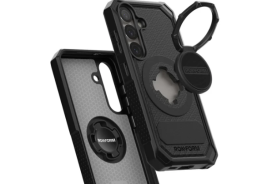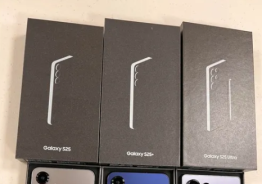The LG-made Google Nexus 4 is a 2012 smartphone while the Sony Xperia Z just started to make waves, but a comparison is relevant nonetheless.
Although the Nexus 4 is a handset from 2012, it will likely continue to be a strong contender for much of 2013, going head to head with new powerhouses hitting the smartphone market. This means the Nexus 4 will be competing against the likes of the HTC One and the Samsung Galaxy S4, but also the Sony Xperia Z which already hit store shelves.
The Nexus 4 and the Sony Xperia Z may be similar in many aspects, but they are quite different in some areas, potentially prompting users to choose one over the other.
Price
Like it or not, price is often a determining factor in choosing between high-end products. Considering that prices for handsets on contract are ever-changing and customers can now choose between a multitude of options, the best choice is to compare SIM-free prices for the handsets.
One of the reasons the Nexus 4 is in such high demand is the price. The unlocked Nexus 4 starts at $299 for an 8GB model and goes up to $349 for a 16GB version on the Google Play Store. A 16GB unlocked iPhone 5, for instance, costs $649, a significantly higher price tag.
The unlocked Sony Xperia Z, meanwhile, comes with a hefty price tag. U.S. release details for the Sony Xperia Z are still scarce, but pricing over $800 already surfaced, and that's without shipping and handling fees. Those who can afford to invest in the latest high-end smartphones may go for the Xperia Z, but the more budget-conscious will likely hoose the Nexus 4. On the other hand, the Sony Xperia Z wins on specs, as detailed below.
Design and Build
Both the Nexus 4 and the Sony Xperia Z sport premium design and build, and they are similar in a number of aspects. Both handsets use glass on the front and back and both have a rubbery plastic frame, though the Nexus 4 is somewhat more slippery. In terms of shape, potential customers can opt for the distinct square shape of the Sony Xperia Z or the more rounded curves of the Nexus 4. Another determining factor when it comes to looks may be the fact that the Xperia Z features plain glass, while the Nexus 4's back is covered in tiny squares. While this may be a detail to some, others may not like the glittery finish of the Nexus 4.
Both handsets are thin and light, with the Sony Xperia Z measuring 5.47 x 2.80 x 0.31 inches (139 x 41 x 7.9mm) and weighing in at 5.15 oz. (146g) and the Nexus 4 measuring 5.27 x 2.70 x 0.36 inches (133.9 x 68.7 x 9.1mm) with a weight of 4.90 oz. (139g). The Sony Xperia Z's display 5-inch display is larger than the Nexus 4's 4.7-inch screen, but both are large handsets overall.
The biggest difference weighing in favor of the Xperia Z is that Sony's new flagship is dust and waterproof, while the Nexus 4 is not. Those looking for a more durable and rugged phone may find the Sony Xperia Z as the better option.
Display
As previously mentioned, the Sony Xperia Z has a larger screen than the Nexus 4, but the difference is not huge. Both handsets sport big displays suitable for Web browsing, games and media consumption.
On the other hand, the Sony Xperia Z outperforms the Nexus 4 in this department thanks to its Full HD resolution of 1080 x 1920 pixels. This means a pixel density of 441 pixels per inch (ppi) compared to the Nexus 4's 320 ppi and 768 x 1280 resolution.
Processor and RAM
Both the Xperia Z and the Nexus 4 pack 1.5GHz Qualcomm Snapdragon S4 Pro processors coupled with 2GB of RAM. Each handset delivers an arguably good performance for a smartphone and they are two of the best smartphones currently available on the market, with no big performance difference between them.
Storage
The Sony Xperia Z is the clear winner in the storage department. While the Nexus 4 comes in 8GB and 16GB variants and the Xperia Z is available in just 16GB configuration, the Sony's micro SD card makes all the difference. The Xperia Z can support up to 32GB of additional memory via a micro SD card, while the Nexus 4 is stuck with the initial configuration, as it doesn't feature a micro SD card slot.
Camera
The camera department again sees the Xperia Z as the winner thanks to its 13-megapixel rear-facing camera that sports an LED flash and Sony Exmor RS sensor. Moreover, the Xperia Z is the first smartphone to offer HDR video recording.
The Nexus 4, meanwhile, sports a decent 8-megapixel camera that can capture quality photos, but is no match for the Xperia Z's camera. Sony's new flagship wins in terms of front cameras as well: its 2-megapixel front shooter has an Exmor R sensor and can record video in Full HD 1080p, while the Nexus 4 has a lower-resolution 1.3-megapixel front shooter limited to 720p video.
Connectivity
Both the Nexus 4 and the Sony Xperia Z have the general connectivity expected from a smartphone, including Wi-Fi, GPS, Bluetooth 4.0, Near-Field Communication (NFC) and Digital Living Network Alliance (DLNA) certification.
The Sony Xperia Z, however, supports 4G LTE networks, whereas the Nexus 4 doesn't. On the other hand, the Nexus 4 offers wireless charging and the Xperia Z doesn't. The handsets reach a draw in this department, so it ultimately comes down to consumer preference.
Software
The software front may also lead to a draw, as both smartphones run on Android Jelly Bean. The Sony Xperia Z runs on Android 4.1 while the Nexus 4 rocks 4.2, but the Sony will get an update soon. Basically, it's pure vanilla Android on the Nexus 4 compared to Sony's overlay. Both do the same job but look slightly different.
The Xperia Z has a more basic lockscreen with no quick settings pull down bar, but has "small apps" and more wallpapers and widgets to offer. Both handsets sport Google Now, which is one of the top features of Android Jelly Bean. Again, the choice comes down to personal taste.
Battery
Neither phone has a removable rear cover, which means owners cannot reach the battery inside. Both the Xperia Z and the Nexus 4 get through the day, but the latter's battery lasts a bit longer thanks to its Stamina Mode. The Nexus 4's Stamina Mode conserves battery power when the screen is off. On the other hand, the Xperia Z has to power a higher-resolution screen.
Conclusion
Both smartphones are powerful and attractive, but the Sony Xperia Z is arguably superior in terms of specs with its Full HD display and great cameras. Then again, the Nexus 4's bargain price has a big say, so the choice ultimately comes down to potential customers' priorities. Those who want a good Android smartphone that will not draw a huge hole in their budget will be more than satisfied with the Nexus 4. Meanwhile, those willing to invest more in a high-end smartphone with top-notch specs and features will fall in love with the Sony Xperia Z.
© Copyright 2025 Mobile & Apps, All rights reserved. Do not reproduce without permission.










